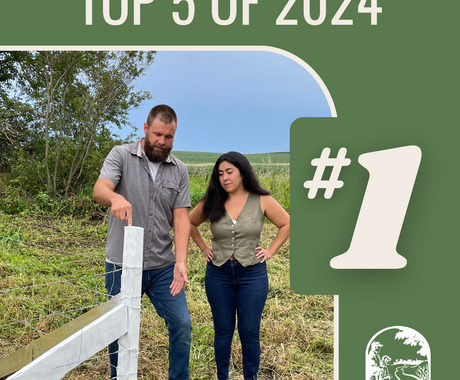By Brian Hanson, former staff member
We will explore the increases in agricultural land values, its effect on landowners’ property tax bills, and the price renters pay to lease land to grow crops in multi-part blog series. This first installment will look at some of the basics of how the property tax system is structured in Nebraska, and begin to look at how valuations have increased over recent years for landowners in one Nebraska county. Please click here to view a report we published in August.
According to the Legislative Research Office, Nebraska’s property tax formula can be summarized as:
Property tax = (Assessed Taxable Property x Rate) – Credits
Land in Nebraska is taxed at its market value, or an estimate of its price if it were for sale. This is based on the sales price of nearby comparable parcels. When assigning a taxable value, property must be assessed (determining taxability and a taxable value) and equalized (comparing valuations of similar property to ensure fair and equal treatment in the assessment process), pursuant to the uniformity clause of the Nebraska Constitution, Article VIII, sec.1, which requires all property taxes to be levied by valuation uniformly and proportionately upon all property. The state Supreme Court has interpreted the uniformity clause to mean that the taxation of property must be uniform in regard to both the rate of tax and the value of the property. There "cannot be a difference in the method of determining the value of the property or the property tax rate, unless separate classifications are based on public policy or a substantial difference in the property.”
The amount of property taxes collected in Nebraska is nearly double the totals collected for either sales or income taxes. It is the largest source of revenue for the state’s schools, as well as for local and county government services. The state does provide some funding to these services, but how much it provides is dependent upon the assessed value of the property within the boundaries of those counties, towns and school districts, with state aid decreasing as taxable values increase.
Since 1972, agricultural and horticultural land have been treated differently than other real property for property tax purposes. In 1972, voters passed a constitutional amendment authorizing the special valuation which allowed agricultural and horticultural land to be valued based on its current use, rather than potential use. In 1984, the Constitution was amended again to make agricultural and horticultural land a distinct class of property. In 1990, a third constitutional amendment was passed, which removed agricultural and horticultural land from the reach of the uniformity clause. Under current law, agricultural and horticultural land must be uniformly assessed within its own class of property, but not with other types of real property.
In 1992, a change was made by the Legislature to provide relief to farmers and ranchers by assessing agricultural and horticultural land at 80 percent of its actual value. This was lowered again in 2006 - LB 968 lowered the percentage agricultural land is assessed to 75 percent of its actual value, where it remains today.
The formula for calculating the value of agricultural land is divided into subclasses, including irrigated cropland, dryland cropland, grassland, wasteland, nurseries, feedlots and orchards, for better comparison of property in the assessment process. In addition, many characteristics are taken into account in evaluating comparable sales for assessment purposes.
Across the state, on average, 60 percent of property taxes are levied by local school districts (see pie chart above). This may seem like a large portion, but it is due to the fact that Nebraska is 49th in the country in funding of state aid per pupil it provides to local districts, making the state’s schools third most dependent on property taxes in the country. Also, it is important to consider as school and local government property tax revenues rose with rising land values, state aid decreased proportionally according to the state-set formula. This was not necessarily a windfall for schools and local governments. As local property tax income increases, the state school funding formula decreases the level of state aid schools receive.
Any conversation about changing the formula for determining property tax assessments would have to include discussion of the state’s school funding formula. We cannot provide tax relief for for landowners without finding another source of funding for our schools - reform must be balanced. If we lower the property tax burden, other sources of school revenue must be found to increase state aid from various revenue sources.
The Nebraska Legislature acted in response to the agricultural land valuation during the 2016 legislative session by providing $20 million of additional funding for the Real Property Tax Credit Act for 2017 tax year (LB958). They also changed the calculation of credit so that credit will be allocated as if agricultural and horticultural land, and agricultural and horticultural land receiving special valuation, were valued at 120 percent of their taxable value. This increased state spending on the Real Property Tax Credit Act to $224 million for the current tax year. The Legislature’s action shifts money from the state general fund to the property tax reliant local and county governments attempting to make them whole from the revenue lost due to the discount given on property taxes.
This shifting of funds does not directly address the problem of increasing property taxes, due to assessments being tied to the rising market value, and uses state money that could otherwise be used to fund essential services. Furthermore, the property tax credit provides token relief to most landowners. The credit mitigates the increase in tax bills, but it fails to address the root cause.
To examine how property taxes on agricultural land have increased, how much different entities that levy property taxes are collecting, and how much and who benefit from the property tax credit, we examined the property tax bills for all parcels of land in Hooker County outside of city limits. On average, valuations of agricultural land, without improvements such as a house or outbuildings, increased about 47 percent between 2011 and 2015 in Hooker County. Meanwhile, tax bills on unimproved agricultural land increased about 28 percent. In the table below, we present the tax bills of 10 owners of land classified as agricultural or horticultural. Landowner J owns just under 500 acres and received a credit of $142.67 on a tax bill that would have been $1775 without the credit. Meanwhile, Landowner C, with over 19,000 acres, received a credit of over $5,500 on a property tax bill that would have been over $70,000 without the tax credit.
Due to property tax being assessed according to market value, one could farm their land for decades, not buying any more parcels, and see their property taxes increase year after year while doing nothing more than minding their own business, as others buy and sell their land around them, driving up their tax valuations. We will look at the issue of increasing market values further in upcoming installments.
We gathered our data from the Hooker County Assessor’s GIS website.





